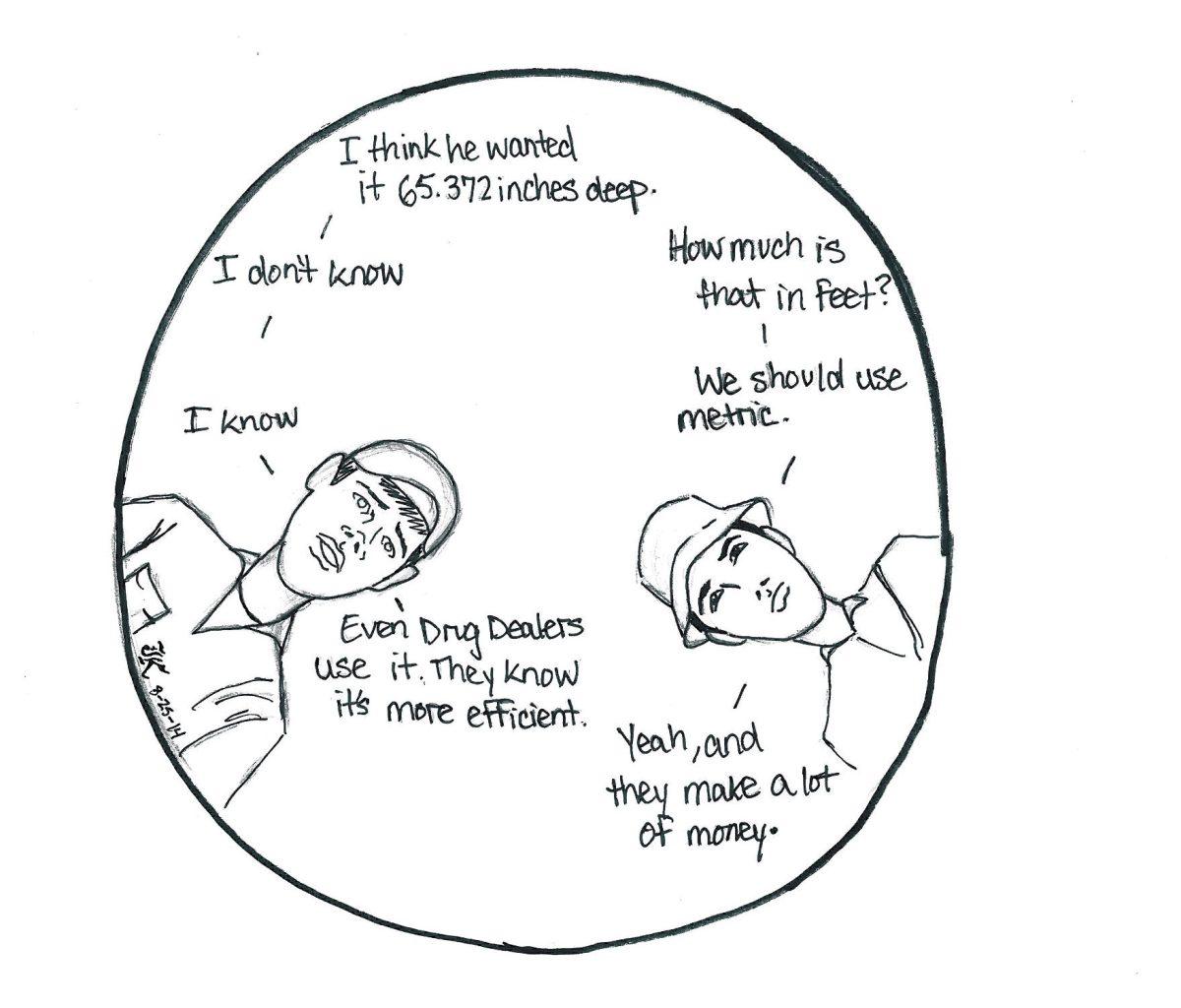I can’t say this enough: The imperial unit system needs to slowly make its exit from our society. It makes no logical sense other than tradition and isolates the United States from the rest of the world.
The implementation of imperial units, as opposed to the system of metric units, dates back to 1825 across the British Empire and was rooted in tradition, but now has little relevance. It’s obviously logical to the average U.S. citizen because it’s all we’ve known, but it has little consistency.
Honestly, step back and think about how these make sense.
We have 12 inches equaling one foot, three feet in one yard and 5,280 feet in a mile.
For liquids, there are 20 fluid ounces in an imperial pint, two pints in a quart and 8 pints in a gallon. The weight standards are 16 ounces in a pound and 2,240 pounds in a long ton.
There is absolutely no consistency in our measurement system. Meanwhile, the metric system is the same across domains.
In the metric system, 1,000 grams equal a kilogram, 1,000 meters equal a kilometer and 1,000 milliliters equal a liter. There is a consistent use of prefixes with the appropriate base word that corresponds to weight, distance and volume.
By the late 20th century, most countries around the world, except for the U.S. and a small number of others such as Burma and Liberia, adopted the metric system. The United Kingdom, meanwhile, is stuck in the middle. It uses imperial units for beer and miles for distances and speeds on roads, but British law has pushed for using the metric system since 1995.
Unfortunately, we don’t realize the hassle yet. We live in a world where everything has been defined in imperial units. This puts us at a disadvantage when it comes to communicating in other countries or with people from other countries. It doesn’t seem like a large problem, but it most definitely is.
I will be writing to you from Holland this semester. After my first week abroad, the difference in standards is exponentially more irritating than the language barrier. I didn’t realize how many daily activities in the U.S. relied on the imperial system.
In the morning I make breakfast with food labeled in metric units. It would seem the people here have never heard of cups, tablespoons or teaspoons, and the nutritional facts and serving sizes are all per 100 grams. Next, I head to the gym and see signs in kilometers, and kilometers per hour. In the gym, the weights are all in kilograms. The list goes on and continues throughout the day, the most irritating moments coming while talking with other students.
I’m among students from Germany, Chile, Kazakhstan, Hong Kong, Turkey, Norway, Iceland and Scotland and am the only person who refers to imperial units. It’s frustrating and makes me keep wondering why we still stick to our outdated system.
I bring this up periodically with American friends and family, and they all say the same thing: “It’s too hard to switch now.” Well, it’s never going to get easier, so what are we waiting for? Companies that ship internationally would probably appreciate our switching because it would consolidate packaging and labeling. People need to stop holding on to an obsolete system and let go and learn.











